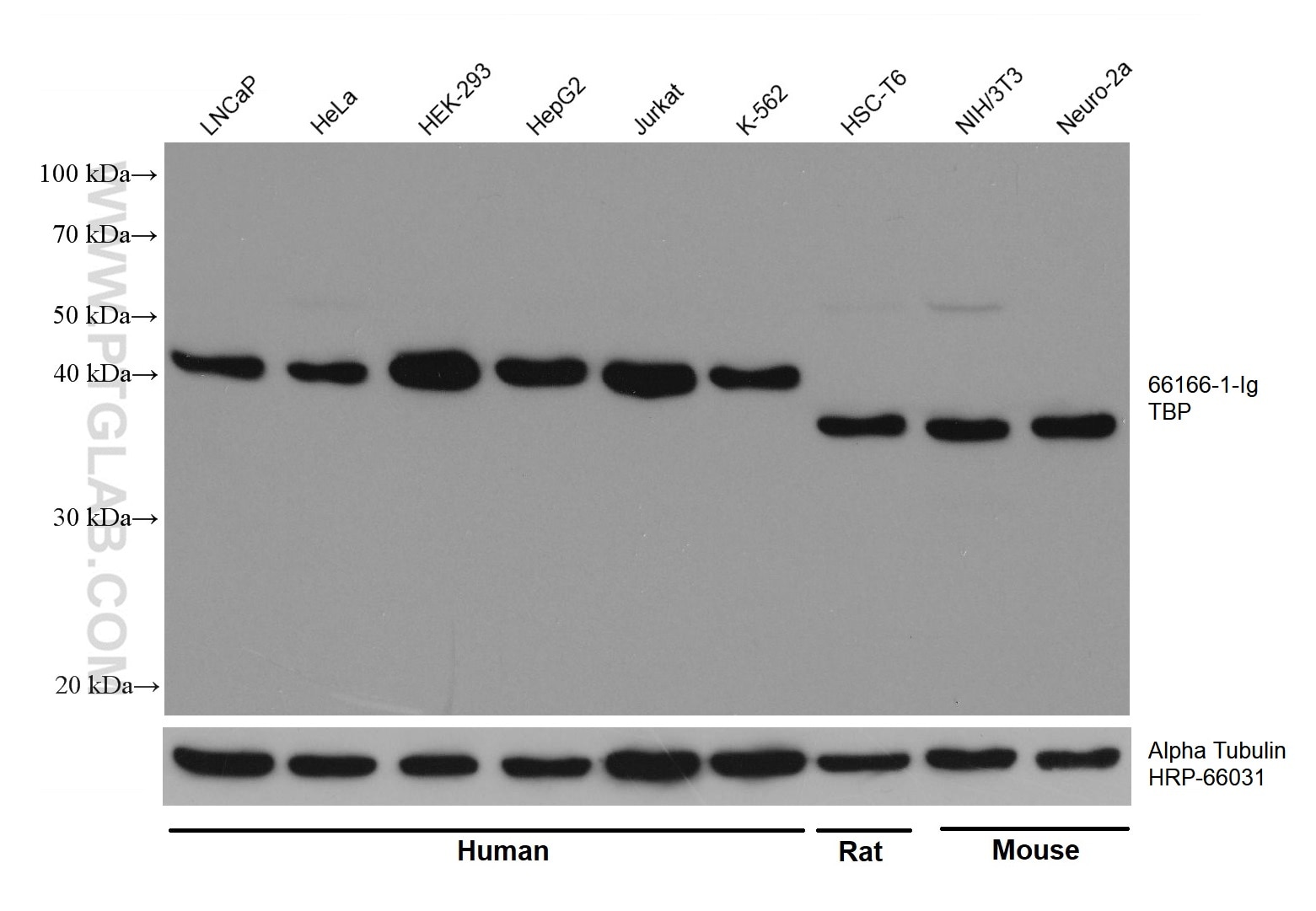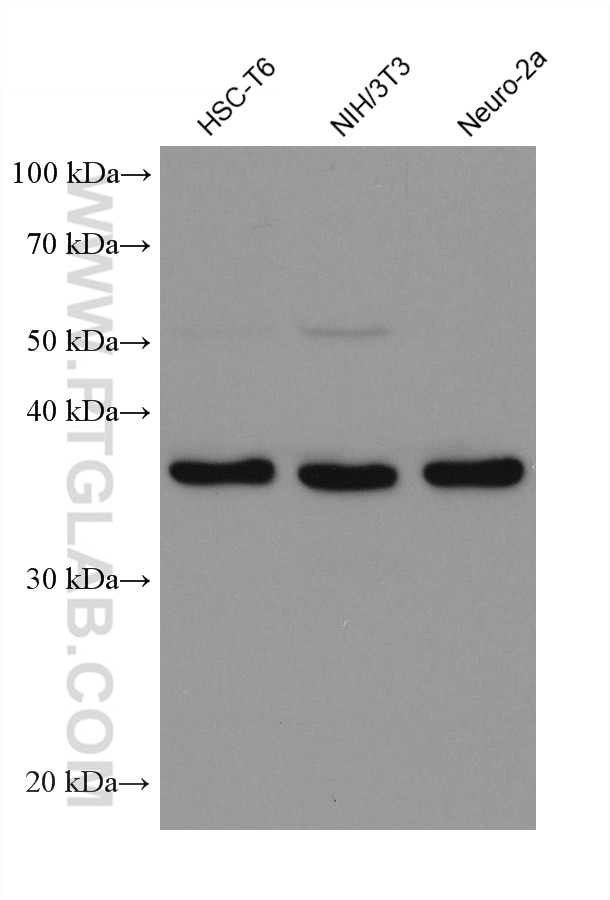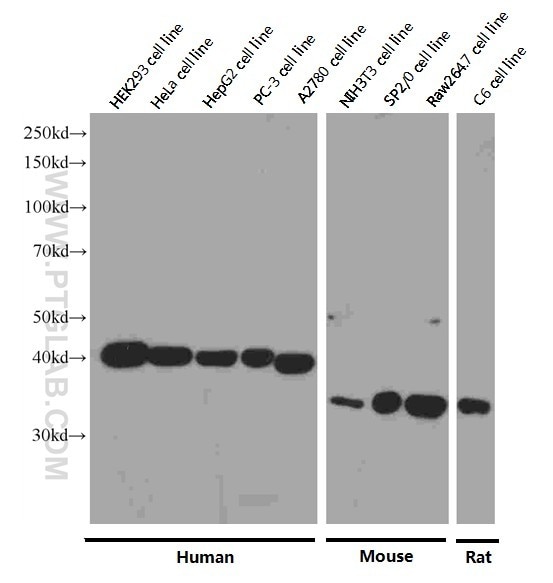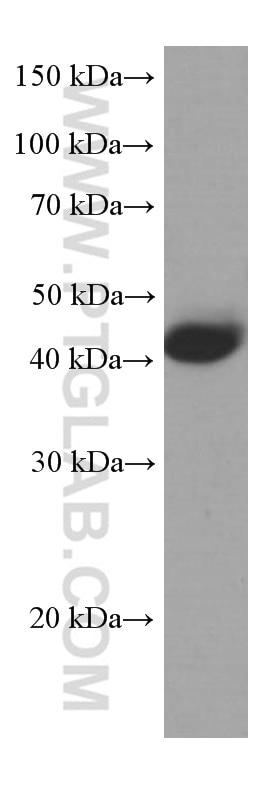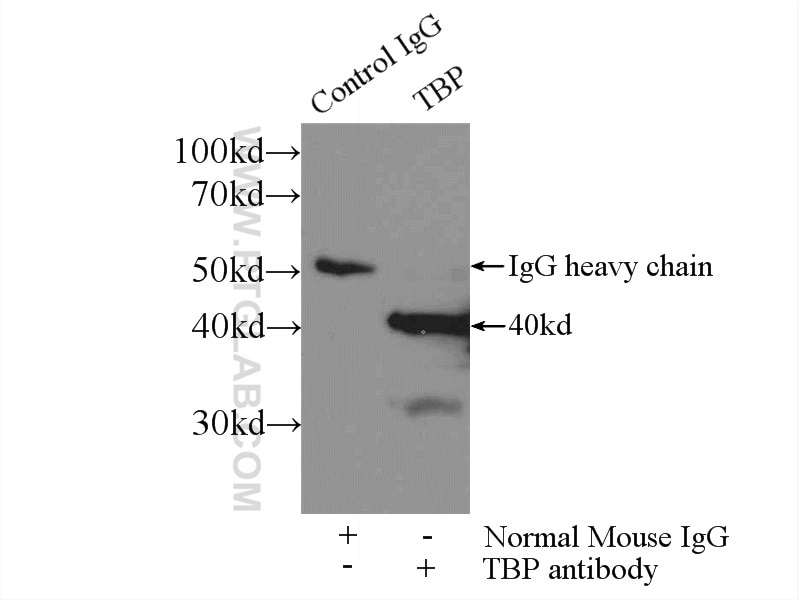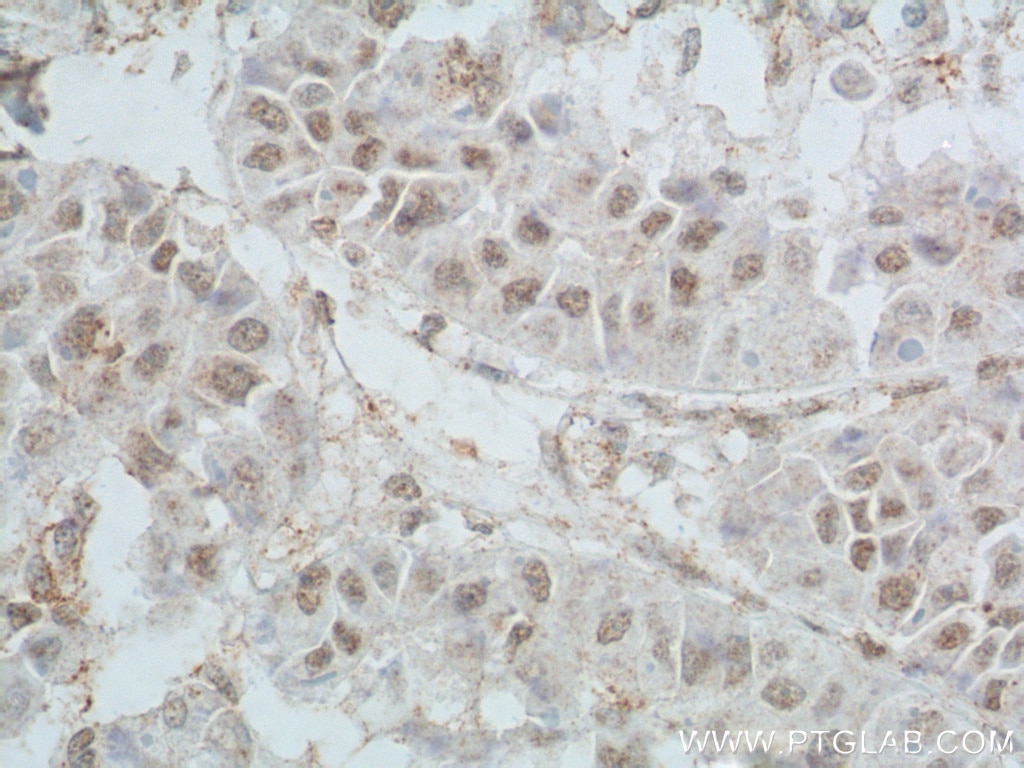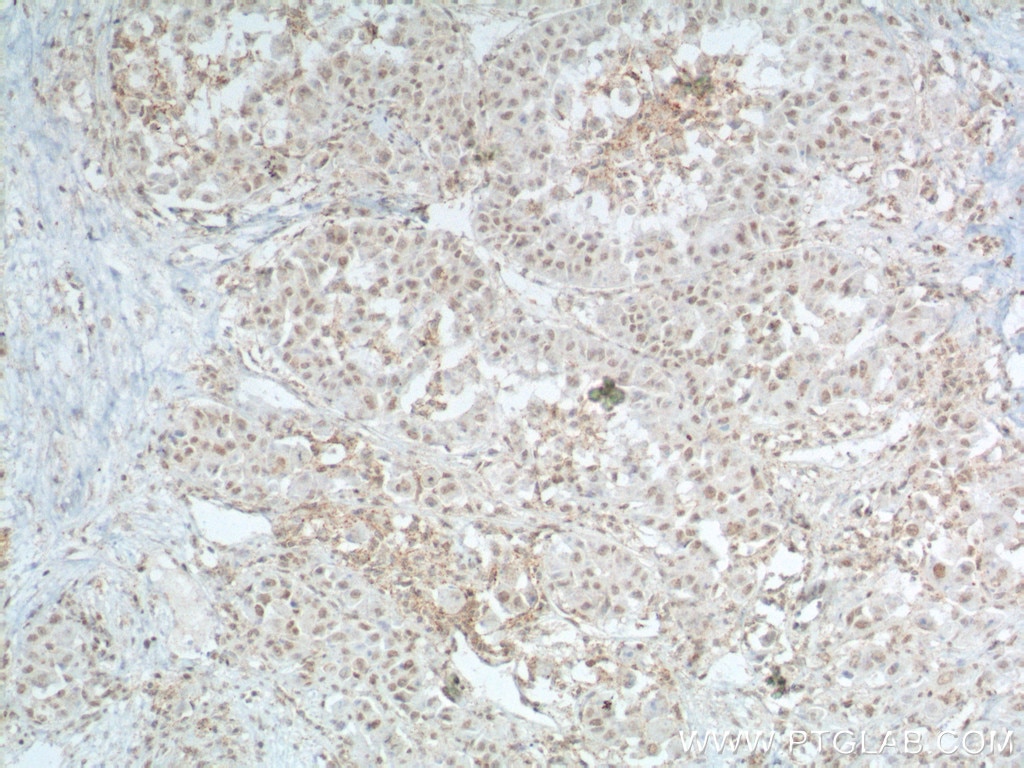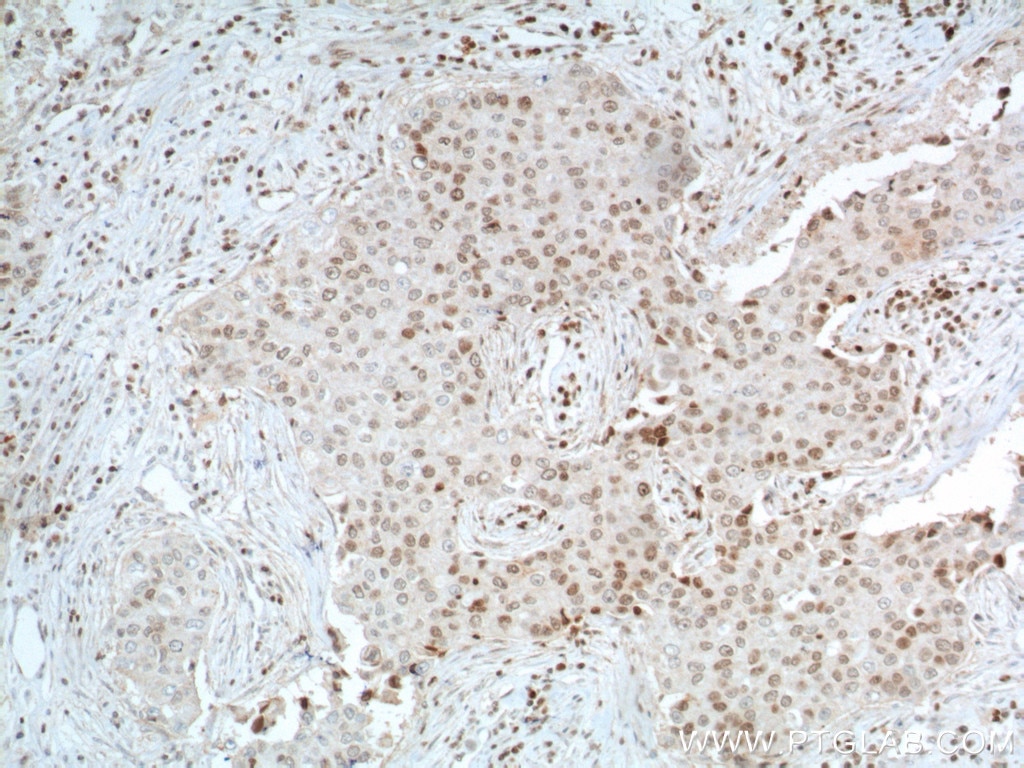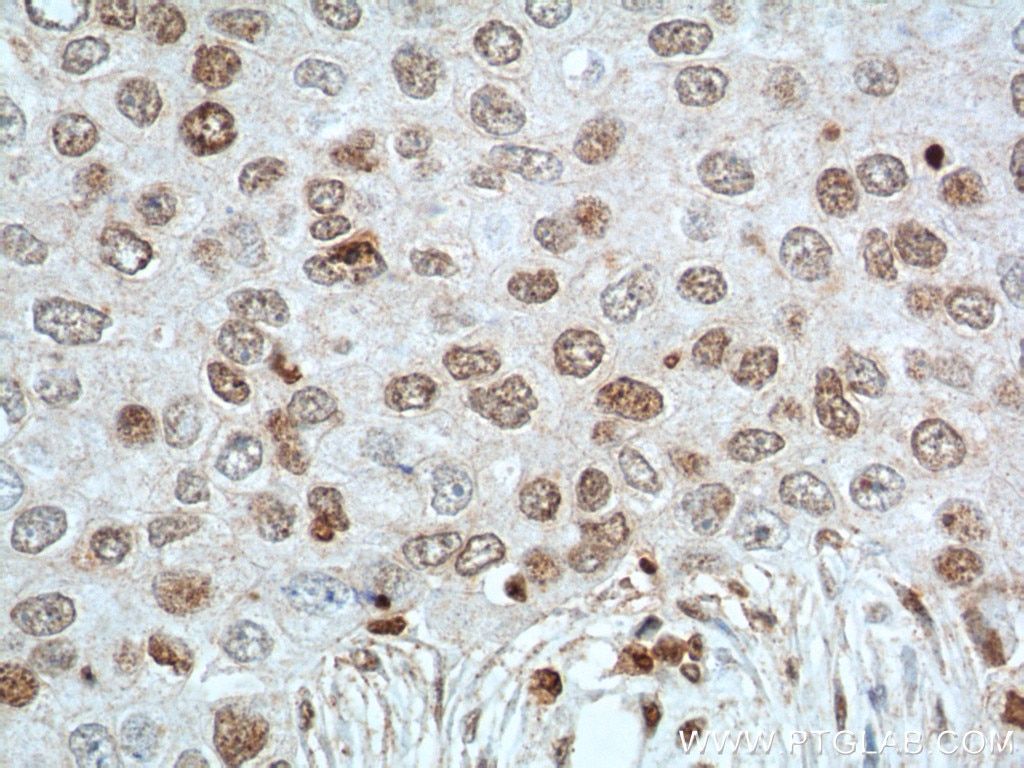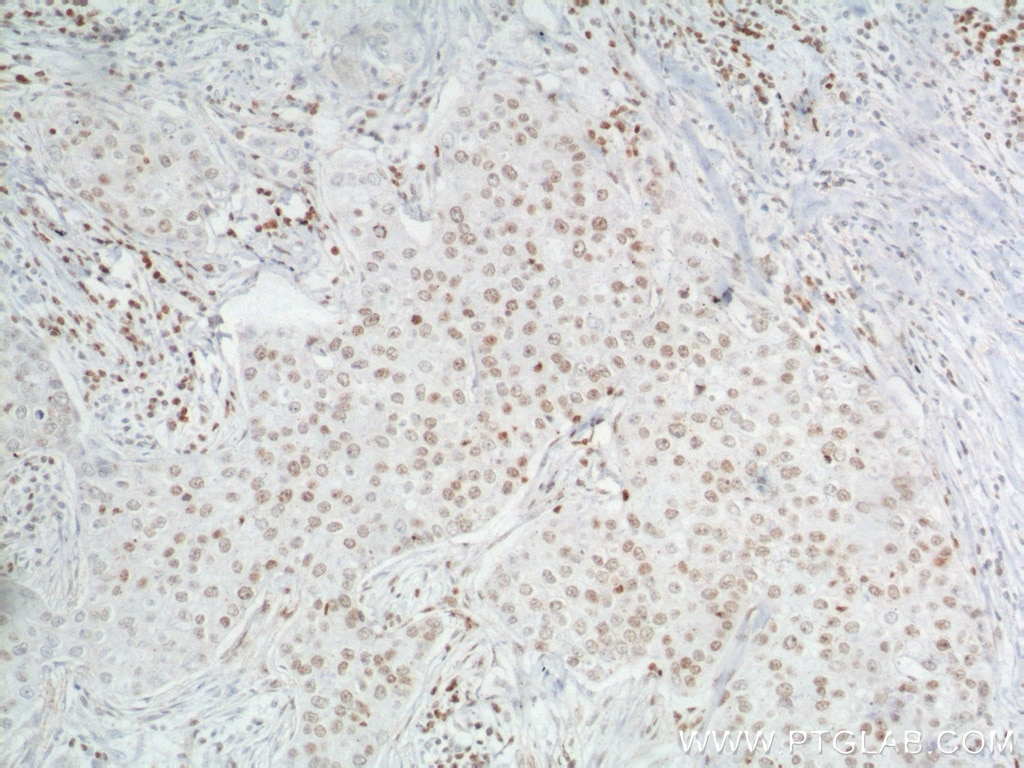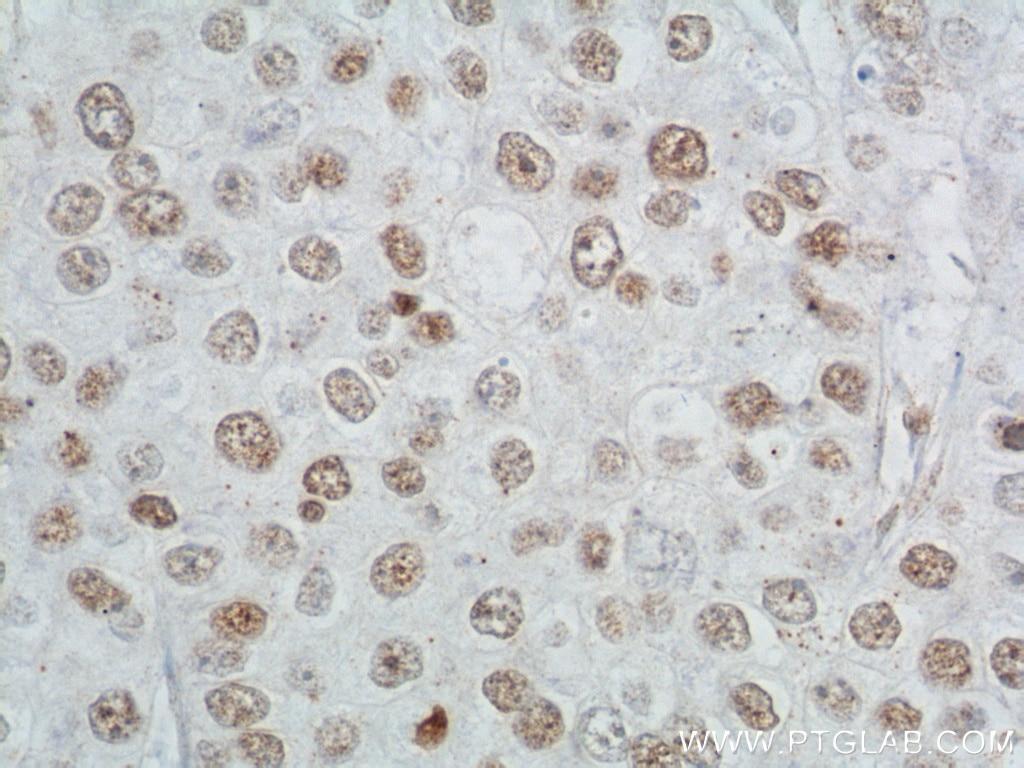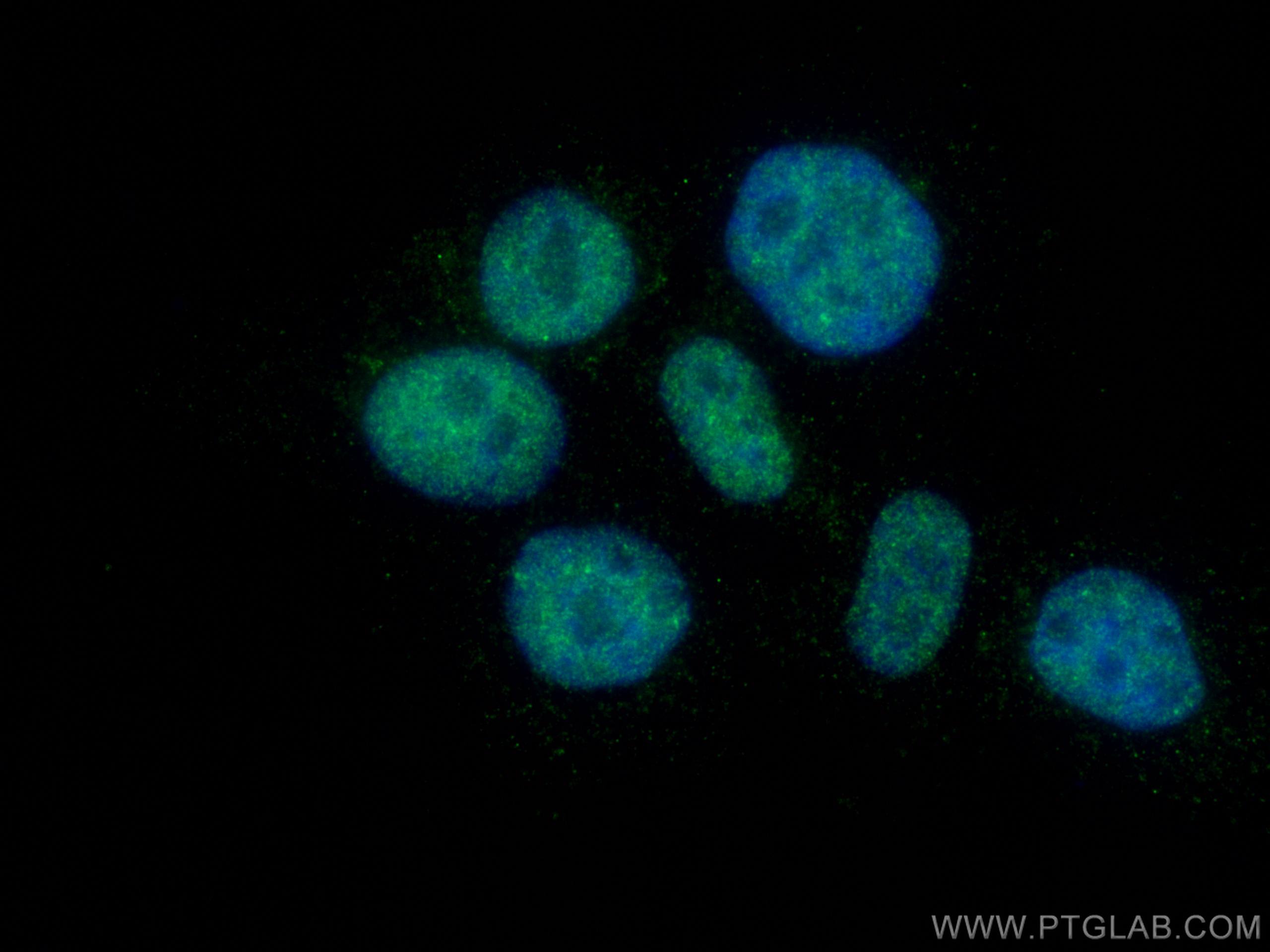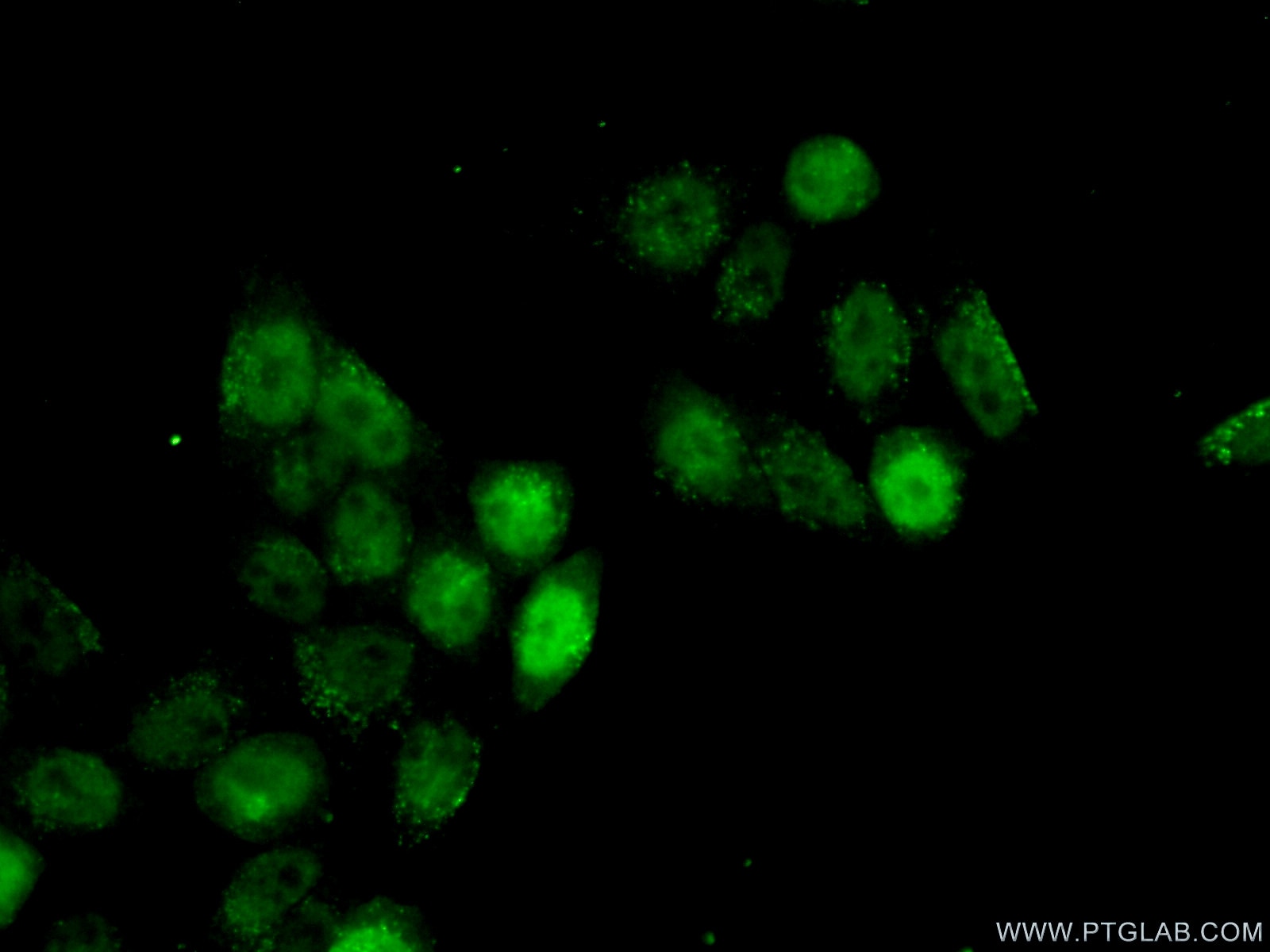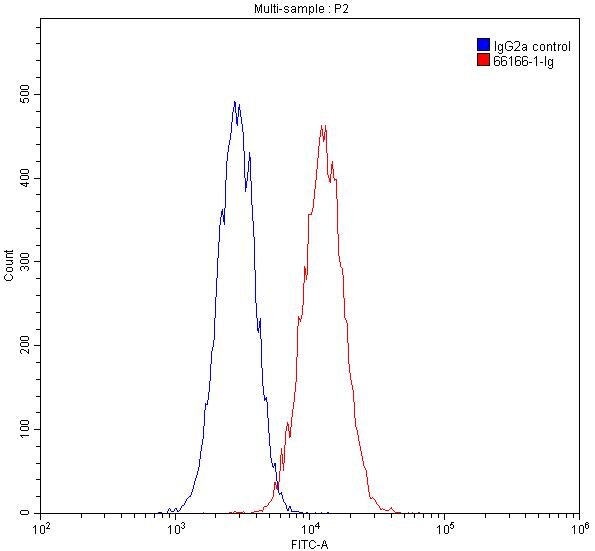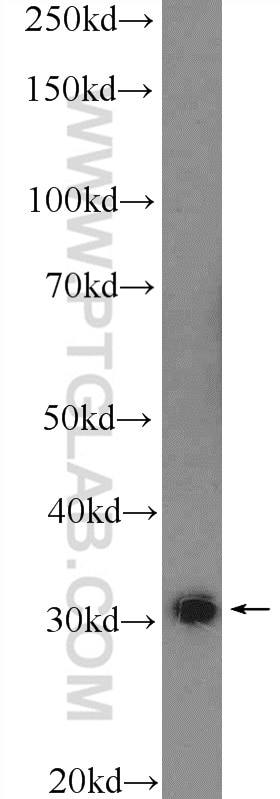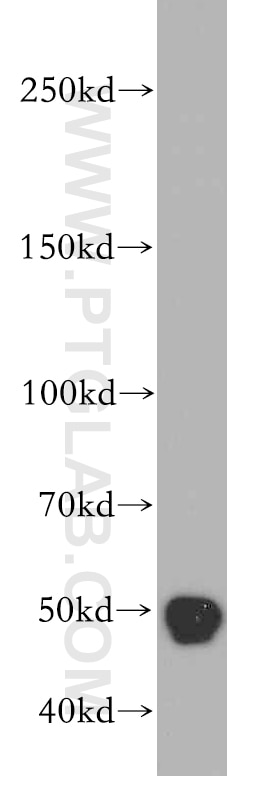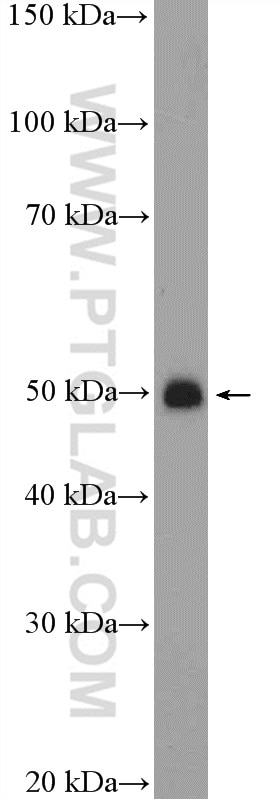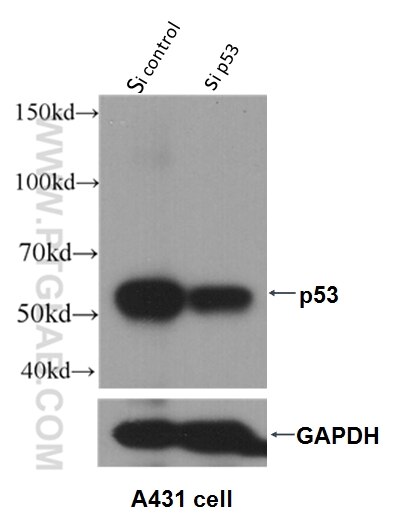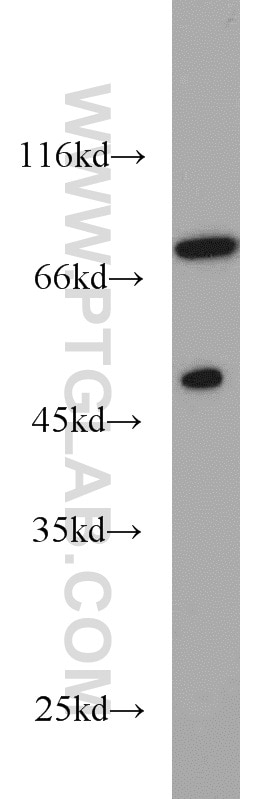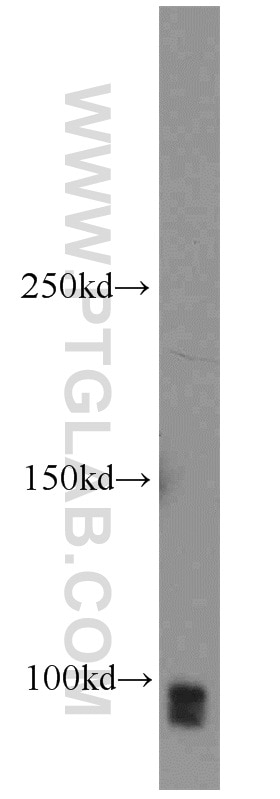TBP Monoklonaler Antikörper
TBP Monoklonal Antikörper für FC, IF, IHC, IP, WB, ELISA
Wirt / Isotyp
Maus / IgG2a
Getestete Reaktivität
Hausschwein, human, Maus, Ratte
Anwendung
WB, IP, IHC, IF, FC, ELISA
Konjugation
Unkonjugiert
CloneNo.
2H3B2
Kat-Nr. : 66166-1-Ig
Synonyme
"TBP Antibodies" Comparison
View side-by-side comparison of TBP antibodies from other vendors to find the one that best suits your research needs.
Geprüfte Anwendungen
| Erfolgreiche Detektion in WB | LNCaP-Zellen, Hausschwein-Lebergewebe, HEK-293-Zellen, HeLa-Zellen, HepG2-Zellen, Jurkat-Zellen, K-562-Zellen, Neuro-2a-Zellen, NIH/3T3-Zellen |
| Erfolgreiche IP | HEK-293-Zellen |
| Erfolgreiche Detektion in IHC | humanes Leberkarzinomgewebe, humanes Mammakarzinomgewebe Hinweis: Antigendemaskierung mit TE-Puffer pH 9,0 empfohlen. (*) Wahlweise kann die Antigendemaskierung auch mit Citratpuffer pH 6,0 erfolgen. |
| Erfolgreiche Detektion in IF | A431-Zellen, HeLa-Zellen |
| Erfolgreiche Detektion in FC | HepG2-Zellen |
Empfohlene Verdünnung
| Anwendung | Verdünnung |
|---|---|
| Western Blot (WB) | WB : 1:20000-1:100000 |
| Immunpräzipitation (IP) | IP : 0.5-4.0 ug for 1.0-3.0 mg of total protein lysate |
| Immunhistochemie (IHC) | IHC : 1:325-1:1300 |
| Immunfluoreszenz (IF) | IF : 1:200-1:800 |
| Durchflusszytometrie (FC) | FC : 1:10-1:100 |
| It is recommended that this reagent should be titrated in each testing system to obtain optimal results. | |
| Sample-dependent, check data in validation data gallery | |
Veröffentlichte Anwendungen
| WB | See 21 publications below |
| IF | See 1 publications below |
Produktinformation
66166-1-Ig bindet in WB, IP, IHC, IF, FC, ELISA TBP und zeigt Reaktivität mit Hausschwein, human, Maus, Ratten
| Getestete Reaktivität | Hausschwein, human, Maus, Ratte |
| In Publikationen genannte Reaktivität | human, Hausschwein, Maus, Ratte |
| Wirt / Isotyp | Maus / IgG2a |
| Klonalität | Monoklonal |
| Typ | Antikörper |
| Immunogen | TBP fusion protein Ag12383 |
| Vollständiger Name | TATA box binding protein |
| Berechnetes Molekulargewicht | 338 aa, 38 kDa |
| Beobachtetes Molekulargewicht | mouse/rat 33-36 kDa and human 37-43kDa |
| GenBank-Zugangsnummer | BC110341 |
| Gene symbol | TBP |
| Gene ID (NCBI) | 6908 |
| Konjugation | Unkonjugiert |
| Form | Liquid |
| Reinigungsmethode | Protein-A-Reinigung |
| Lagerungspuffer | PBS mit 0.02% Natriumazid und 50% Glycerin pH 7.3. |
| Lagerungsbedingungen | Bei -20°C lagern. Nach dem Versand ein Jahr lang stabil Aliquotieren ist bei -20oC Lagerung nicht notwendig. 20ul Größen enthalten 0,1% BSA. |
Hintergrundinformationen
The TATA binding protein (TBP) is a transcription factor that binds specifically to a DNA sequence TATA box. This DNA sequence is found about 25-30 base pairs upstream of the transcription start site in some eukaryotic gene promoters. TBP, along with a variety of TBP-associated factors, make up the TFIID, a general transcription factor that in turn makes up part of the RNA polymerase II preinitiation complex. As one of the few proteins in the preinitation complex that binds DNA in a sequence-specific manner, it helps position RNA polymerase II over the transcription start site of the gene. However, it is estimated that only 10-20% of human promoters have TATA boxes. Therefore, TBP is probably not the only protein involved in positioning RNA polymerase II. This antibody detects human TBP (~40 kDa) and mouse/rat Tbp (~35 kDa).
Protokolle
| Produktspezifische Protokolle | |
|---|---|
| WB protocol for TBP antibody 66166-1-Ig | Protokoll herunterladen |
| IHC protocol for TBP antibody 66166-1-Ig | Protokoll herunterladen |
| IF protocol for TBP antibody 66166-1-Ig | Protokoll herunterladen |
| IP protocol for TBP antibody 66166-1-Ig | Protokoll herunterladen |
| FC protocol for TBP antibody 66166-1-Ig | Protokoll herunterladen |
| Standard-Protokolle | |
|---|---|
| Klicken Sie hier, um unsere Standardprotokolle anzuzeigen |
Publikationen
| Species | Application | Title |
|---|---|---|
Genome Res Ligand-induced native G-quadruplex stabilization impairs transcription initiation. | ||
PLoS Biol Loss of adenomatous polyposis coli function renders intestinal epithelial cells resistant to the cytokine IL-22. | ||
Virulence Inhibition of cell proliferation by Tas of foamy viruses through cell cycle arrest or apoptosis underlines the different mechanisms of virus-host interactions. | ||
Biochem Pharmacol PPARα regulates the expression of human arylacetamide deacetylase involved in drug hydrolysis and lipid metabolism. | ||
Front Oncol TFEB Promotes Prostate Cancer Progression via Regulating ABCA2-Dependent Lysosomal Biogenesis. | ||
Mol Cancer Res Identification of Endogenous Adenomatous Polyposis Coli Interaction Partners and β-Catenin-Independent Targets by Proteomics. |
